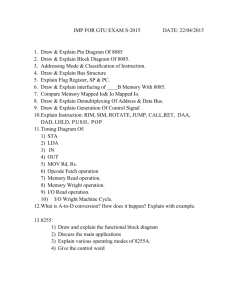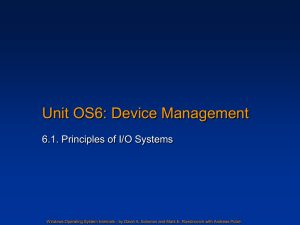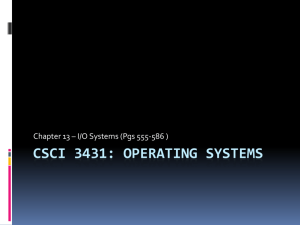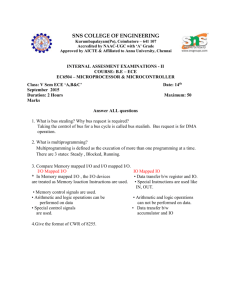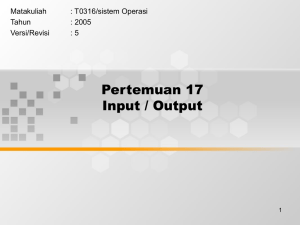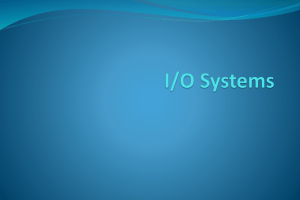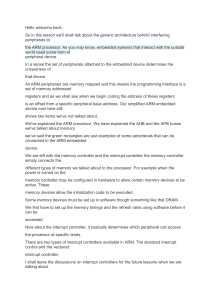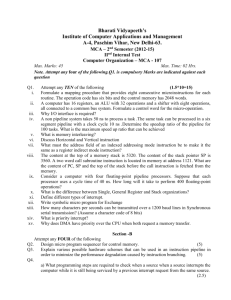Q10 Study Guide
advertisement
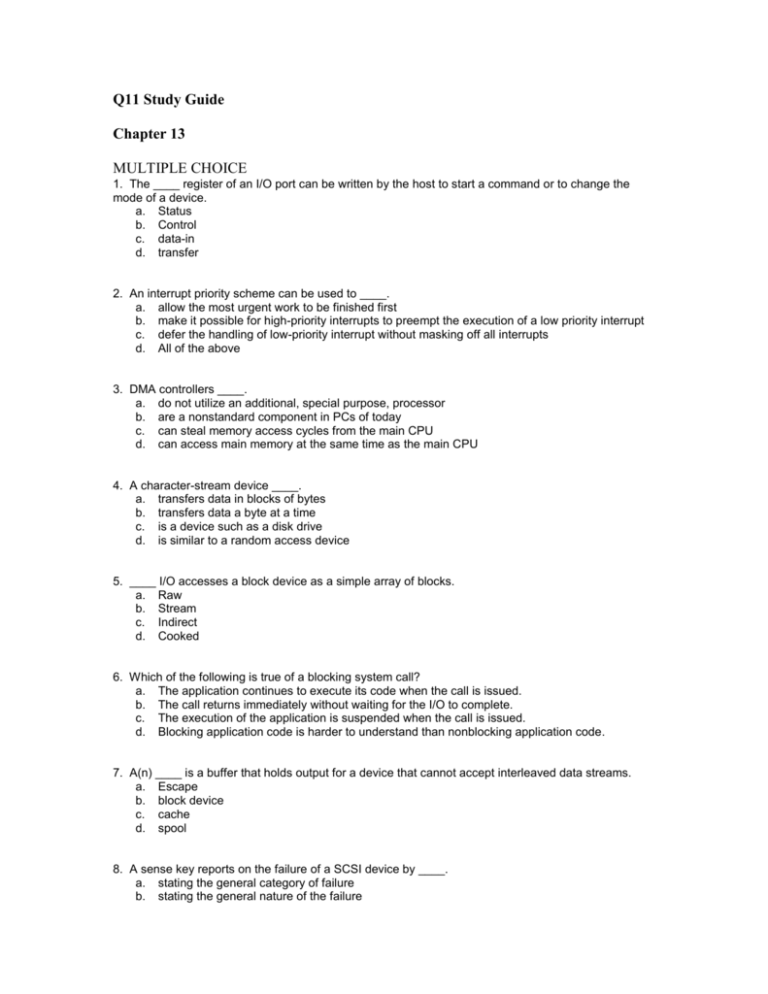
Q11 Study Guide Chapter 13 MULTIPLE CHOICE 1. The ____ register of an I/O port can be written by the host to start a command or to change the mode of a device. a. Status b. Control c. data-in d. transfer 2. An interrupt priority scheme can be used to ____. a. allow the most urgent work to be finished first b. make it possible for high-priority interrupts to preempt the execution of a low priority interrupt c. defer the handling of low-priority interrupt without masking off all interrupts d. All of the above 3. DMA controllers ____. a. do not utilize an additional, special purpose, processor b. are a nonstandard component in PCs of today c. can steal memory access cycles from the main CPU d. can access main memory at the same time as the main CPU 4. A character-stream device ____. a. transfers data in blocks of bytes b. transfers data a byte at a time c. is a device such as a disk drive d. is similar to a random access device 5. ____ I/O accesses a block device as a simple array of blocks. a. Raw b. Stream c. Indirect d. Cooked 6. Which of the following is true of a blocking system call? a. The application continues to execute its code when the call is issued. b. The call returns immediately without waiting for the I/O to complete. c. The execution of the application is suspended when the call is issued. d. Blocking application code is harder to understand than nonblocking application code. 7. A(n) ____ is a buffer that holds output for a device that cannot accept interleaved data streams. a. Escape b. block device c. cache d. spool 8. A sense key reports on the failure of a SCSI device by ____. a. stating the general category of failure b. stating the general nature of the failure c. d. giving detailed information about the exact cause of failure maintaining internal pages of error-log information 9. A(n) ____ is a front-end processor that multiplexes the traffic from hundreds of remote terminals into one port on a large computer. a. terminal concentrator b. network daemon c. I/O channel d. context switch coordinator 10. Which of the following is a principle that can improve the efficiency of I/O? a. Increase the number of context switches. b. Use small data transfers c. Move processing primitives into hardware d. Decrease concurrency using DMA controllers ESSAY QUESTIONS (will not be on quiz but good exam questions) 1. Explain the concept of a bus and daisy chain. Indicate how they are related. 2. Explain the difference between a serial-port controller and a SCSI bus controller. 3. Explain the concept of polling between a host and a controller. 4. What is interrupt chaining? 5. Why is DMA used for devices that execute large transfers? 6. What is the purpose of a programmable interval timer? 7. Give an example of when an application may need a nonblocking I/O system call. 8. What are the three reasons that buffering is performed? 9. What is the purpose of a UNIX mount table? 10. UNIX System V implements a mechanism called STREAMS. What is this mechanism? TRUE/FALSE 1. An expansion bus is used to connect relatively high speed devices to the main bus. 2. A maskable interrupt can never be disabled. 3. A dedicated device cannot be used concurrently by several processes or threads. 4. Although caching and buffering are distinct functions, sometimes a region of memory can be used for both purposes. 5. STREAMS I/O is asynchronous except when the user process communicates with the stream head.

